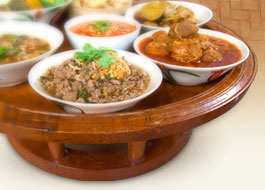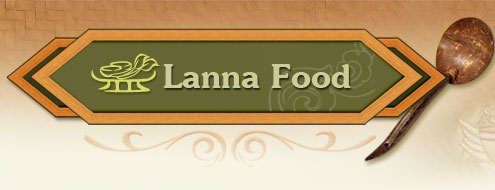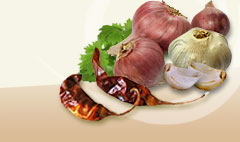Pumpkin |
|
|
 | Cucurbita Moschata Decne. |
|
| |
 | Cucurbitaceae |
|
| |
 | Pumpkin, cushaw |
|
| |
 | Fak thong (Central), ba nam kaeo, ba fak kaeo (Northern), mak fak lueang ( Mae Hong Son-Tai Yai), mak-ue, mak khi sa, lueang khi sa (Rattana Phromphichai, 1999, 4905), nam tao (Southern) (Kanchana Diwiset et al., 2005, p. 167) |
|
| |
 | Annual plant, long-running. Stem round or pentagonal, puberulous with tendrils. Leaves shallow lobate, axillary, with 5-6 acute or alternate segments, crenulate-dentate, puberuluous on the flower surface, 10-20 cm wide, 15-30 cm. long. Flowers monoecious, solitary, tubular, orange-yellow. Fruit often ovoid, verrucous, variable in size with hard greenish-brown skin, yellow to dark orange inside. Seeds numerous, oval flat, with small margin. (Agricultural Extension Department, 2007) |
|
| |
 |

Calcium, phosphorus, iron, Vitamins A, B1, B2 and C and Niacin (Phak Phuen Ban Ahan Phuen Mueang, 2007, p. 66) Full of nutrients and beta-carotene and helps prevent cancer (in the stomach in particular), good for reducing weight due to lots of fiber, less fat and calories. (Thawithong Hongwiwat, 2004, p. 97) Lanna people use the tender shoots, leaves, flowers and fruit blanched or steamed to eat with namphrik or to put in curry with pork and fermented fish. Ripe fruit or shoots are sliced and stir fried with egg or added to kaeng khae or made into a dessert known as khanom ba fak kaeo (khanom fak thong). Seeds are dried in the sun and roasted with a little salt for a snack (Rattana Phromphichai, 1999, p. 4905-4906) |

Seeds: expel worms, aid in urination and are used as an atoxic.
Roots: as a tonic, relieves cough and toxins from opium.
Seed oil: good to nurture the neurological system.
The orange pulp of the ripe fruit is good for treatment of bruises and aches due to inflammation. (Kanchana Diwiset, et al., 2005, p. 167)
|
|
| |
 | All year round (Kanchana Diwiset et al., 2005, p. 167) |
|
| |
 |
Agricultural Extension Department. (2007). Phak Phuen Ban. Retrieved 10 June2007from http://singburi.doae.go.th/acri (in thai). Kanchana Diwiset, et al., comp. (2005). Phak Phuen Ban Phak Nuea. Phennapha Sapcharoen, editor. (2nd ed). Nontaburi: Center for Text Development on Traditional Thai Medicine. (in thai). Thawithong Hongwiwat. (2004). Saranukrom Phak. (2nd ed). Bangkok: Saengdaet. (in thai). Phak Phuen Ban Ahan Phak Mueang. (2007). Bangkok: Fa Aphai Co., Ltd. (in thai). Rattana Phromphichai. (1999). Fak Kaeo, Ba. inSaranukrom Wattanatham Thai Phak Nuea (Vol. 9,p. 4905-4906). Bangkok: Siam Commercial Bank Foundation for the Encyclopedia of Thai Culture. (in thai). |
|
| |
|
|




